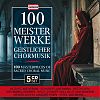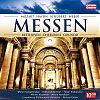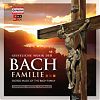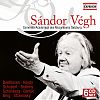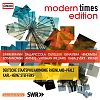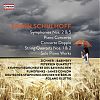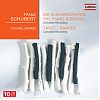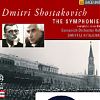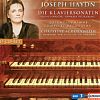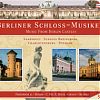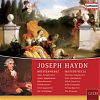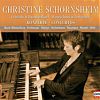box-sets

ORGAN CONCERTOS
Christine Schornsheim · Martin Haselböck · Roland Münch · Wiener Akademie
CD 1: GEORG FRIEDRICH HÄNDEL (1685-1759)
Organ Concertos No. 6 in B flat major HWV 294 · No. 3 in G minor HWV 291
No. 4 in F major HWV 292 · No. 2 in B flat major HWV 290 · No. 5 in F major
HWV 293 · No. 13 in F major HWV 295 „The Cuckoo and the Nightingale“
CD 2: JOHANN SEBASTIAN BACH (1685-1750)
Concerto for organ, oboe, strings and continuo in D minor
Reconstruction after BWV 146 1&2, BWV 188,1
CARL PHILIPP EMANUEL BACH (1714-1788)
Concerto for organ, strings and continuo in G major Wq 34/H 444 · in E flat
major Wq 35/H 446
CD 3: JOSEPH HAYDN (1732-1809)
5 Concertos for organ and strings in C major,
Hob. XVIII:1 · Hob. XVIII:5 · Hob. XVIII:8 · Hob. XIV:11 · Hob. XIV:12
CD 4: MICHAEL HAYDN (1737-1806):
Concerto for organ, viola, strings and continuo in C major
JOSEPH HAYDN: Concerto for organ and strings in C major, Hob. XVIII:10
WOLFGANG AMADEUS MOZART: Church Sonata in C major for strings and
organ KV 336 (336d) · 3 Church Sonatas for two solo violins, bass and organ
K.224 (241a) K. 67 (41h) · K. 328 (317c)
CD 5: JOSEPH GABRIEL RHEINBERGER (1839-1901)
Concertos for organ and orchestra op. 137 & op. 177 · Suite for violin and
organ op.166
CHRISTINE SCHORNSHEIM · MARTIN HASELBÖCK · ROLAND MÜNCH
WIENER AKADEMIE · NEUES BACHISCHES COLLEGIUM MUSICUM
This 5CD-Set includes some of the most important and most impressive concertos for organ with instrumental accompaniment and shows us also the interesting development of this concert genre from Baroque periode to the romantic era. One of the most famous virtuoso performers of his day and age on the organ and the piano, George Frideric Handel was the first composer in the history of music to liberate the organ from its liturgical context and turn it into a concert instrument. At the first performance of his oratorio "Deborah", on March 17th, 1733, he also for the first time played one of his organ concertos as interval music on a small instrument without any pedals. Two years later, the official announcements of performances of his spiritual works were already referring to these "incidental pieces" as a special attraction for audiences seeking musical diversification. In the 18th century, particularly in its second half, very basic changes in musical life and far-reaching shifts in style occurred, having a lasting effect also on the area of organ music. The fortepiano began its victorious advance, bringing to an end the earlier predominance of the harpsichord and the organ. Pieces that are rich in harmony and full of affect changes causing tension can be more graphically presented on a pianoforte with its wider range of dynamic means than on a harpsichord. Other pieces more deliberately placing emphasis on a splendid sound and representation suggest a performance on the harpsichord whose wealth of harmonic overtones are better suited to hold their own against an orchestra and in larger halls than the comparatively intimate sound of an early Viennese pianoforte. Against this background, the organ presents itself as a moderator between both instruments. Because of its many registers, it has tonal versatility available and is able to effortlessly make itself heard due to its acoustics.Haydn definitely cannot have envisaged the type of an opulent church organ, but rather a smaller "cabinet organ" as it was found in the music rooms and small chapels of the wealthy bourgeoisie or nobility. The soloist, accompanied by a small circle of instrumentalists, was, very likely, the composer Haydn himself.


